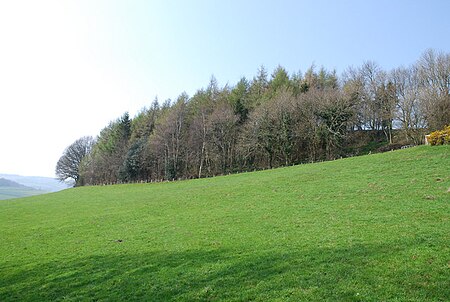Castle Ditches

Castle Ditches is the site of an Iron Age trivallate hillfort in the southeast of Tisbury parish in Wiltshire, England. It is probable that its ancient name was Spelsbury; it was referred to as Willburge in Tisbury's charter of 984 A.D. Its shape is roughly triangular, and follows the contours of the small hill upon which it sits. The earthworks comprise a triple row of ramparts and ditches, now covered on three sides by woodland. There is a large entrance towards the southeast, where there is the shallowest incline of the hill; but there is also a narrow slit on the opposite side. The area within the site encompasses nearly 24 acres (9.7 ha), and the greatest height of the ramparts is about 40 feet (12 m). Castle Ditches was recorded as a Scheduled Monument in 1932.
Excerpt from the Wikipedia article Castle Ditches (License: CC BY-SA 3.0, Authors, Images).Castle Ditches
Geographical coordinates (GPS) Address Nearby Places Show on map
Geographical coordinates (GPS)
| Latitude | Longitude |
|---|---|
| N 51.054 ° | E -2.0542 ° |
Address
Tisbury
, Tisbury
England, United Kingdom
Open on Google Maps










